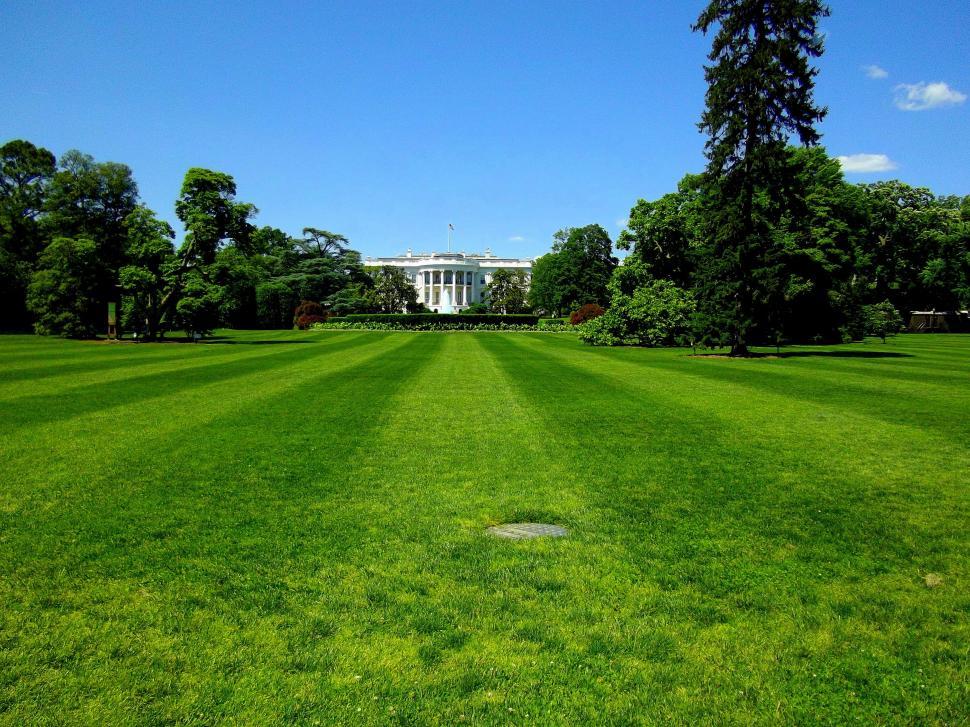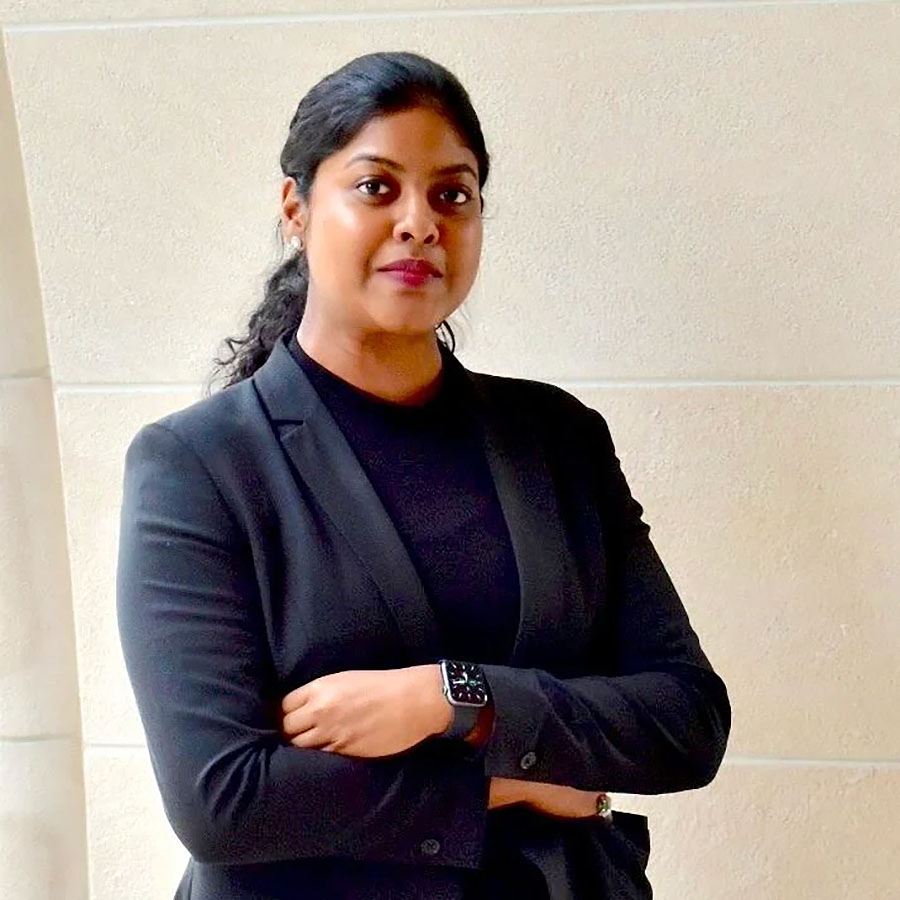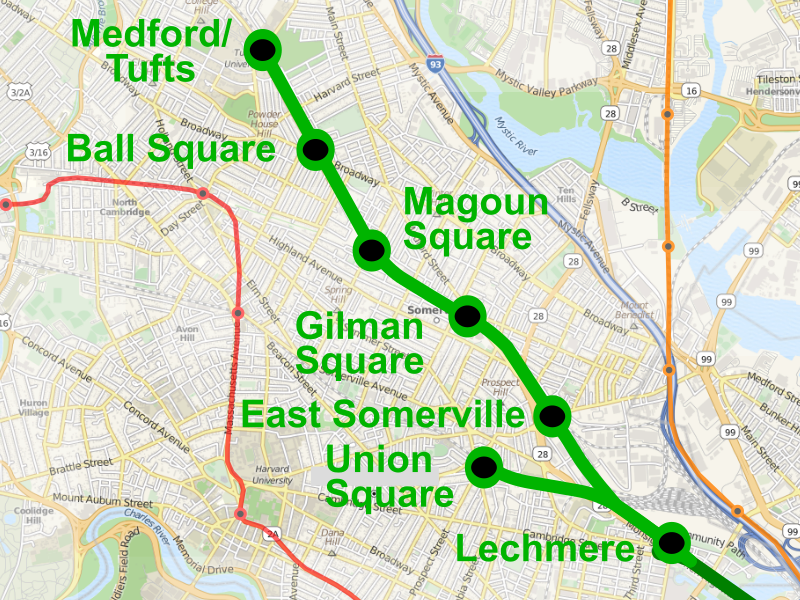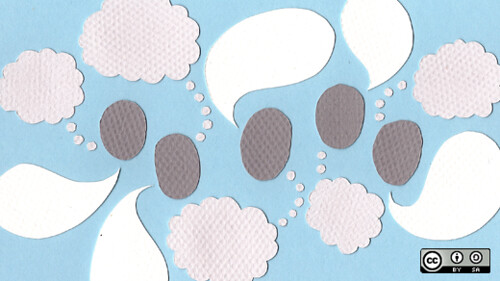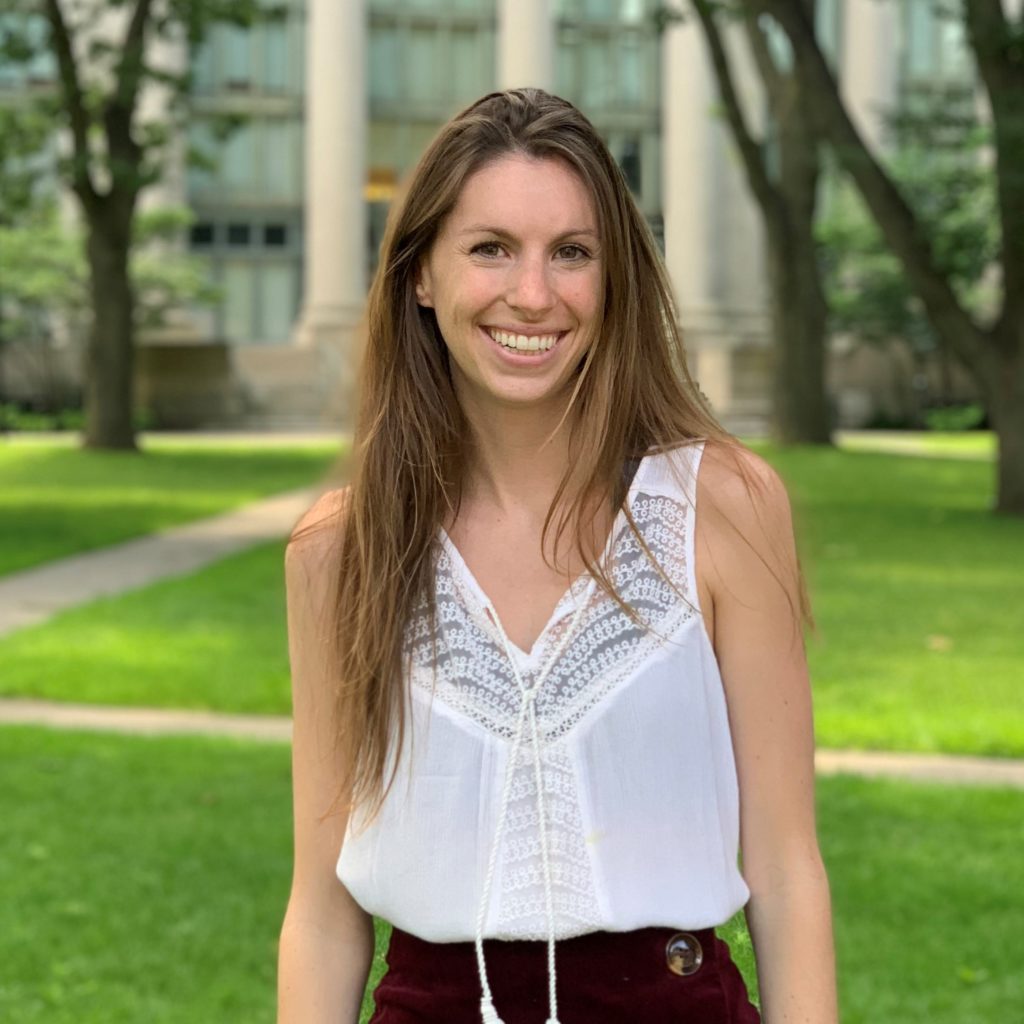by Justin Minion ’23
In Part I of this series, I have covered stakeholders battles that would likely be described as “distributive.” For instance, the stakeholder battles between the Conservative Law Foundation and the Commonwealth of Massachusetts, and between the MBTA and the MassDot would likely be examined through the lens of zero-sum bargaining. In order to compel the Commonwealth to reduce carbon emissions, the Conversation Law Foundation twice sued and then settled. Similarly, from the moment the GLX was green-lit, the MBTA and the MassDot, both under public pressure, relentlessly battled over which aspects of the project would be assigned to each agency. At this point, one might suspect that all stakeholder battles surrounding the Green Line Extension were similarly bitter. However, such an assumption would be misguided. In fact, several negotiations, in particular between local community organizations and town representatives could accurately be described as “integrative.” That is, these organizations seem to have, from the beginning, rejected the notion that bargaining had to be zero-sum. These organizations sought creative solutions that would satisfy the interests of all parties involved. One organization in particular was remarkably successful in finding an integrative and creative solution. This organization is known as “The Friends of the Community Path.”
In 2001, Lynn Weissman and Joel Bennett, two residents of Somerville, founded the Friends of the Community Path. At the time, the Community Path ran approximately 1.75 miles, connecting Davis Square and the suburban Minuteman Path. Lynn and Joel, both avid cyclists,1 wanted the Community Path to start before Davis Square. In fact, they wanted the Path to go all the way back to Lechmere. A path from Davis Square to Lechmere would create a direct link between the 10-mile Minuteman path and the extensive 23-mile network of paths that ran alongside the Charles River. In Lynn and Joel’s vision, they saw an interconnected network of pedestrian and cyclist paths that would allow suburban residents to commute to downtown Boston without having to use roads consumed by cars. That was the mission of their organization from the beginning. Lynn soon thereafter gave the organization the slogan: “To Lechmere, and Beyond!”,2 a play on Buzz Lightyear’s famous catchphrase.
In order to connect Davis Square with Lechmere, Lynn and Joel sought the construction of a 10-foot wide, 2-mile paved recreational walkway. One might believe, quite reasonably, that construction of such a short path would be simple, cost-effective, and speedy. However, given that Somerville is one of the most densely populated municipalities in the United States, a major challenge would be locating adequate space for the Community Path.3 This would have to be done without any major takings of citizens’ private property. Another major challenge would be procuring funding for such a project. The City of Somerville would not be able to fund the design and construction of the project on its own; it would require assistance from other stakeholders. Finally, some residents were likely to bristle at the installation of an extended Community Path, arguing that such an expenditure would be frivolous and that money should be allocated to more pressing issues. As a result, and at this time, Lynn and Joel were facing quite long odds in achieving their mission.

President, Friends of the
Community Path.
But Lynn and Joel had serendipity on their side. In the early 2000s, two strokes of particularly good fortune would prove consequential for the Community Path. The first of these was the addition of a new team member. Shortly after the formation of the organization, Alan Moore joined the Friends of the Community Path.4 Alan Moore brought a unique skillset to the organization that the other members did not have. Notably, Alan had professional engineering skills, which allowed him to advise on the technical feasibility of extending the Community Path.5 Once Alan had joined, the group began examining the industrial aspects of the project that would need to be considered. Recognizing that their goals might be possible, Lynn and Alan became co-presidents of the organization. Lynn would lead the organization’s advocacy and outreach efforts while Alan would propose technical solutions to be considered by the transit agencies.6
“Integrative” negotiations are those that seek to maximize the interests of all parties. Integrative negotiations are often referred to as “collaborative”, “cooperative” and “problem-solving.” Often, they are colloquially referred to as negotiations that seek to “expand the pie” because they seek win-win, rather than win-lose solutions. They typically require that parties think creatively and beyond the bounds of what might seem possible. Often, integrative negotiations have an “ah-ha” moment, when negotiators realize that a fixed asset can be shared or that one party can provide a beneficial service to another at little cost. Integrative bargaining has been a prime focal point of negotiation theory for many decades and has been the subject of several best-selling books.
Integrative negotiation operates in contrast to “distributive” negotiation. Humans routinely take a distributive approach when bargaining, often without realizing that they are doing so. This tendency was documented in the 1960s by Deutsch and Krauss with their Trucking Game, which I referred to at length in Part I. It was also reinforced by Bert Brown in 1968. Humans, whether consciously or not, perceive negotiations as fixed-sum. We understand bargaining as adversarial, convinced that any win for another party is a loss for ourselves. Part of our tendency toward distributive bargaining can be explained by evolutionary forces. However, another explanation is based on the ways in which we have been socialized. Large corporations, at least in the United States, deliberatively seek to make humans engage in distributive bargaining.7 Meanwhile, most of American television focuses on some type of distributive negotiation, often regarding money.
Parties that wish to use an integrative negotiating process must (a) understand the needs and interests of the other parties, and (b) search for creative solutions that meet those needs and interests. Understanding the needs and interests of another party is not necessarily unique to integrative approaches. In fact, it is also a common strategy utilized by distributive negotiators. But, in those cases, distributive negotiators seek such information in order to gain greater bargaining power. Integrative negotiators seek to understand one another in order to expand the pie. Skilled negotiators understand that their personal needs and interests may not be the same for all parties. For instance, respect and an appearance of fairness may be more important to one party than conserving a certain resource. Negotiators need to understand what their counterparts are seeking in order to help them fulfill those needs.
Once negotiators have determined each other’s needs, they next begin to search for solutions that maximize value. At this stage, negotiators no longer consider their own interests, but the interests of all other parties. Parties must let go of the idea that one party may “win” or may “beat” another party by obtaining a larger share of a certain asset. If parties revert to a win-lose mentality, integrative negotiation becomes impossible. Negotiators now strive to generate creative and alternative solutions. This stage is often said to be one of the hardest parts of the process. Lewicki proposes that negotiators who have gotten to this stage, but are stuck, should consider attempting to “redefine, recast, or reframe the problem.”8 Or, negotiators could “take the problem as given” and subsequently create an exhaustive list of all possible and conceivable solutions.9 Integrative negotiations can be time- and energy- consuming. Their success is often equally dependent on the skillfulness of the parties as well as the interpersonal relationships between those parties.
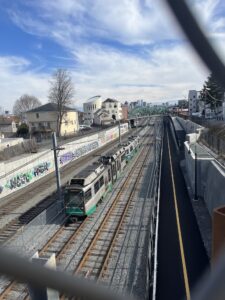
GLX, commuter rail, and the Path. Source:
Justin Minion.
The addition of Alan Moore was the first piece of serendipity for the Friends of the Community Path. Alan possessed the technical engineering expertise that would later prove to be highly consequential. The second piece of serendipity came three years later, in 2005. Up until that point, Lynn and Alan had not yet determined exactly where they would like the Community Path to be placed. Their sole mission was to connect Davis Square to Lechmere, but it was not exactly clear how they would go about doing so. At the time, the City of Boston held the property rights to a narrow trench that ran from Lechmere to Tufts and which was used by commuter rail. Lynn and Alan wondered whether a Community Path could be installed in that existing right of way. However, that existing right of way often ran several dozen feet below street level, making any large-scale construction project more difficult and costly. Furthermore, were the Community Path to be installed in that existing right of way, there was a high likelihood that Boston’s commuter rail would experience significant disruptions as a result.
The nature of these roadblocks changed entirely in 2005 when the Commonwealth and the City fully green-lit the Green Line Extension. Lynn and Alan’s problems that had at first seemed insurmountable were no longer so. The heavy equipment that would be necessary for constructing the Community Path would already be stationed and operating in the existing right of way. Contractors and designers were being selected by the City. For Lynn and Alan, this became simply a matter of getting their dream project included in the package. Lynn characterized this moment as a “once-in-a-lifetime opportunity!” because “the GLX and [Community Path] will share infrastructure and heavy construction machinery.”10 The moment they had been waiting for had come. The Community Path would either be constructed now, or likely never.

Between 2005 and 2013, residents’ support for the Community Path grew enormously. Lynn and Alan’s organization grew from three members to almost 1,000 during that period of time. Their leadership was expanded to 12 highly dedicated individuals, including Lynn and Alan. Events were held once per month to discuss progress and advocacy efforts. Their Facebook and Twitter pages provided the dates and times of transit agency meetings and encouraged residents to advocate for the Community Path. As a result of their devoted member base, as well as their growth, the Friends of the Community Path began establishing lines of communication with the Office of the Somerville Mayor (Joe Curtatone) and the Massachusetts Secretary of Transportation (Richard Davey). Lynn and Alan have often been asked about their early growth as a community organization. In Alan’s view, the early 2000s were characterized by a “sea change” in public opinion regarding public transportation. Before then, Alan believes that the Community Path would have been regarded as “frivolous” and “fringe.”11 However, at the turn of the millennium, residents’ seemed to become more convinced that a commuter path was not just beneficial, but also necessary.12 Additionally, the fact that the Community Path would either be incorporated now or never produced a sense of urgency among residents. One journalist described the situation as having “one bite at the apple.”13 Finally, as the organization grew, Lynn amplified the project’s branding. Stickers were distributed with the phrase “Got Path?” and featured a set of rail tracks running alongside a walking path. Other branding efforts seemed to be intended to create a permanent linkage between the Community Path and the Green Line Extension. For instance, Lynn began referring to the Community Path as the “CLX”, an acronym quite similar to “GLX”, which was often used to refer to the Green Line Extension.14 Hearing about both initiatives, residents would naturally assume that the GLX and the CLX were quite similar and thus two parts of the same project.
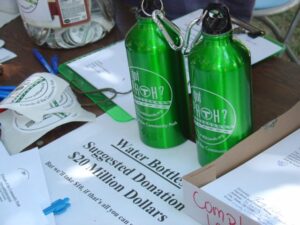
million was the lower-bound estimate for the cost of the Path.
Source: Friends of the Community Path Facebook page.
Despite their early growth and extensive outreach, the Community Path initiative remained at an impasse. In 2005, when Lynn and Alan approached the MassDot about adding the Community Path to the Green Line project, the MassDot told them that such a project was impossible. The MassDot held firm to its position over the following five years. At the time, preliminary analyses estimated the cost of the Community Path would be at least $20 million and up to $40 million. The $20 million version assumed that the Path would be placed in the existing right of way (i.e., in the trench). The $40 million version assumed that the Path would be built at street level, approximately 30 feet above the trench, but still run parallel to the GLX. Whichever plan was ultimately adopted, the City of Boston and the City of Somerville made it clear that they would not pay $20+ million for a recreational path that seemed to have little benefit. Furthermore, between 2005 and 2013, both transit agencies (the MBTA and the MassDot) were truly overwhelmed by the GLX project on its own. It would seem illogical to broaden the project scope of the GLX when it wasn’t clear that the initial project would actually be carried to completion.
Lynn and Alan’s interactions with the MassDot would be praised by integrative negotiators. Between 2005 and 2010, the MassDot repeatedly said “No.” to their proposals. However, with each rejection, Lynn and Alan’s subsequent move was fairly unconventional. Instead of going to battle with the MassDot, which surely would’ve increased positional entrenchment, Lynn and Alan took an inquisitorial approach. They simply asked the MassDot for the reasons underlying each rejection. Various obstacles, some simple and others more technical, were cited: excavation in the existing right of way would be required, retaining walls would need to be added on one side and fencing on the other, and ramps would need to be installed for ADA-compliance. In addition to these obstacles, the MassDot told Lynn and Alan that the proposed location for the Community Path had already been allocated to other entities. Local utility operators were going to install electrical and natural gas lines in that space. It would also be used as an entryway for maintenance vehicles and for emergency responders to access the tracks. Once these were installed, there simply would be no room left over for the addition of a recreational path.
When new perspectives are brought into a negotiation, the chance that parties will come to an integrative solution increases. Contrary to the MassDot’s perspective, Lynn and Alan believed that the installation of the Community Path was still feasible. To them, most of the obstacles cited by the MassDot could be overcome with simple solutions. For instance, the MassDot required that maintenance and emergency vehicles be able to access the tracks. In response to this requirement, Lynn and Alan proposed that the Community Path be constructed to accommodate both pedestrians and emergency vehicles. Lynn and Alan also ensured that the Path’s design would leave sufficient room for electrical and natural gas lines. Utility operators would be permitted to drive their vehicles on the Path in order to repair those lines.
Additionally, Lynn and Alan believed that the MassDot would derive other benefits from the Community Path. At the time, the MassDot was struggling to design a cost-effective and ADA-compliant entranceway at the brand-new Gilman Square station.15 The Community Path would provide the necessary entranceway and would be ADA-compliant. The Community Path would result in other improvements to the Green Line Extension, even if they didn’t relieve the MassDot of a statutory obligation. For instance, the Community Path would create safe egress for passengers, in the event of an emergency. While not necessarily required, such an addition would materially increase safety for passengers riding the GLX. Finally, the Community Path would likely increase the number of individuals riding the Green Line and, thus, increase the revenues derived from the project.
In Part I of this series, I suggested that when audiences exert pressure on their agents and representatives, these parties become increasingly conflict-oriented. Bert Brown argued that such conflict-orientation resulted from agents’ desire not to “lose face” before their audience. I then considered whether this dynamic was partly responsible for the deterioration in the relationship between the MassDot and the MBTA in the early 2000s. To the extent that it was, one might wonder: Were all parties involved in this public transit project similarly affected? If all parties did not take a similar conflict-oriented approach, what explains such a difference? In particular, why did the MassDot seemingly come to an integrative solution with the Friends of the Community Path when it could not with other entities? Every involved organization was, at the time, representing large audiences and constituencies. So what explains this difference?
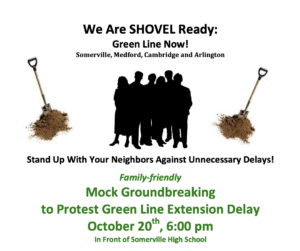
First, it seems that the MassDot was not willing to engage in integrative negotiation, especially in the early stages of the project. For instance, Lynn and Alan’s initial overtures were met with outright rejection. An integrative solution only became possible after Lynn and Alan insisted on an explanation from the MassDot. Second, it’s possible that certain individuals are simply less suspectable to Brown’s “audience effect” than others. Indeed, in Brown’s study, for some individuals, the presence of the audience had little to no impact.16 At the time of writing this series, I have not personally met either Lynn or Alan.17 However, judging from their demeanor in various videos on the internet, they do not strike me as conflict-oriented individuals in any way. It would be hard to imagine Lynn or Alan responding to the MassDot in any way that not be considered friendly. In fact, their efforts to organize the public and garner support for the CLX seem to be entirely peaceful, and often were intentionally playful. For instance, during one event, Lynn and Alan sold metal canteens for a $20 million donation, or “$10, if that’s all you can give.” They organized “family-friendly” mock groundbreakings during which families would pretend to be construction workers. Their organization’s name might be the most telling factor of all. It’s the “Friends of the Community Path.” One has difficulty thinking of an organizational name that’s more warm or kindhearted.
In 2014, the MassDot agreed to design and build the Community Path at an estimated cost of $39 million.18 In April of 2014, Governor Deval Patrick signed a $12.8 billion bond bill, which included $1.3 billion in funding for the GLX and the Community Path.19 As the MassDot and the MBTA enlisted consultants over the Summer of 2014, it became clear that the Green Line’s seven new stations would cost substantially more than the originally anticipated $1.3 billion. The estimate for the entire project was increased to $2.3 billion (a ~78% increase) during that Summer.20 In December of 2014, the Federal Government, through its New Starts Program, agreed to provide $996 million – approximately 40 percent of the funds required to build the GLX. A joint venture between three construction firms, White, Skanska, and Kiewit (WSK) was selected to manage the project, and the project was divided into four distinct phases.
Between 2014 and 2015, cost estimates for the project increased extraordinarily. WSK determined that the estimates for each of the seven stations had been significantly underestimated and the $39 million estimate for the Community Path was also deemed to be inaccurate. WSK estimated that the Community Path would ultimately cost more than $100 million.21 As for the GLX, costs had ballooned to more than $3.3 billion – 150% greater than the original cost estimate made two years prior. Even with ~$996 million in federal funding, the City of Boston simply would not be able to afford a $3.3 billion transit project. If costs could not be reduced significantly, the GLX project would be canceled entirely. In December of 2015, the MassDot and the MBTA put a stop order on all contracts with WSK. No new work was authorized and the GLX stood at a complete standstill.
Between 2015 and 2017, the Green Line Extension underwent significant cost engineering. Each of the seven stations was scaled-back significantly and many expected amenities were cut. The Community Path was not exempt from any of these cuts. While the original estimate called for $100 million for the Community Path, the final proposal reduced that figure to approximately $20 million. The costliest sections of the Community Path would be removed from the plan. Additionally, the width of the Path would be reduced to only 10 feet across – 1 foot narrower than the federal government’s guidelines for recreational paths. The Friends of the Community Path lamented these cuts, and stressed that a narrower path would make the Path more dangerous for pedestrians and cyclists because of the increased risk of collisions.
The Green Line Extension opened in late 2022 at a final cost of approximately $2.3 billion. For comparison, the City of Boston’s total annual budget for 2023 was $4 billion. In New York City, the Second Avenue Subway (Phase I), which only has three stations, cost $4.45 billion to construct. The Los Angeles Purple Line cost approximately $3.6 billion. While these figures are astronomical, I don’t highlight them in an attempt to argue that these projects were big wastes of government funds. In fact, on a per-rider basis, some would argue that each of these projects was fairly cost effective.22 Instead, I highlight these examples to demonstrate that public transit projects are some of the largest investments that American cities make. In fact, public transit projects today can be compared to a city’s expenditures on public education, which often consumes at least 40% of a city’s annual budget. Despite this reality, transit projects do not appear to receive anywhere near the same amount of study and analysis that educational policy receives.
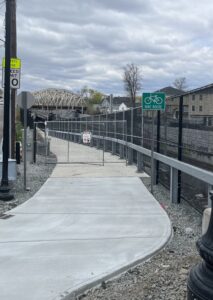
Chester Avenue. Expected to open Summer
2023. Source: Justin Minion.
Given the extraordinary amount of investment made by cities, it seems odd that public transit projects would be so rarely examined. In fact, except for the Marron Institute at NYU, the lookback studies that examined the Green Line Extension were predominantly conducted by consulting firms.23 It seems that academic research in this area is quite minimal. Why might this be the case? One possible explanation is that public transit projects, at least in the United States, are influenced by a complicated and opaque network of stakeholder actors. In fact, many projects involve so many governmental and non-governmental entities that it becomes difficult to understand which parties are ultimately pulling the levers. This series has examined only a small fraction of the stakeholders involved in the GLX project. This contingent includes government actors, non-profit legal organizations, and community activism groups. Furthermore, within each of these general categories, there were a plethora of unique stakeholders. For example, the MassDOT, the MBTA, the City of Boston, and the City of Somerville are all governmental entities, but each had substantially differing interests.
As a result, the number of stakeholders and the complexity of these networks make it difficult to investigate public transit projects after the fact. This is not only the case in Boston. In fact, this is true in many cities across the United States. For instance, as the Second Avenue Subway (Phase I) was being constructed in New York City, the Metropolitan Transit Agency had to obtain permission from an abundance of other public agencies. This includes: the NYC DOT, the NYC DEP, NYC Parks, the NYC DOB, and the FDNY.24 Despite the fact that each agency’s funding comes from the same entity (City Council for the City of NY) and that they’re all arms of local government, these agencies do not behave as one monolith. Instead, each of these agencies frequently harbors divergent interests. One particularly indicative example comes to mind. When the MTA was building the 96th Street Station for the Second Avenue Subway, it asked NYC Parks Department whether a section of the Marx Brothers Playground could be used as a temporary staging area for that station. Further, the MTA offered to compensate NYC Parks for the use of such land. In response to the MTA’s request, NYC Parks – knowing that the MTA really needed that staging area – demanded $15 million, which the MTA felt it had to pay.25
Similarly, in Dallas, the President of DART, Nadine Lee, has publicly and repeatedly accused the City of Dallas of unnecessarily delaying and altering transit project planning. Ms. Lee argues that the City of Dallas has cost taxpayers more than $80 million because of these delays and last-minute alterations.26 One of the most interesting inter-agency dynamics exists in the California Bay Area, where there are a whopping 27 different government transit agencies as well as 6 nongovernmental transit providers.27 It is difficult to imagine a process that would successfully coordinate all 33 entities. These examples hopefully demonstrate that public transit projects in the United States regularly involve a plethora of government agencies, whose interests often diverge significantly.28 An in-depth examination of any public transit project would require an understanding of the dynamics existing between each of these agencies.
Interestingly, public transit projects in other nations seem to involve fewer numbers of stakeholders. One might reasonably wonder whether fewer stakeholders make transit projects easier to implement, since fewer parties can holdup the process. In France, for instance, the President of Ile-de-France (the region that includes Paris) concurrently serves as the President of Ile-de-France Mobilities, the agency that governs Paris’s transportation systems.29 Such an arrangement might strike many in the U.S. as fairly odd. For example, such a setup would require that the Governor of Massachusetts concurrently serve as the President of the MassDot. Even though such an arrangement would be strange, one can imagine that the interests between the two entities would more frequently fall into alignment because they would be governed by the same individual.
Those that study project management often assert that public works projects involve a tradeoff between three competing interests. These interests are: scope, schedule, and budget.30 These individuals argue that any successful project must pick two of these interests, at the expense of the third. In other words, one can have a project that is extensive in scope and speedy, but that project will be very costly. Alternatively, one can have a project that is quick and cheap, but whose scope will end up being inadequate. The most important assumption in this model is that, by way of substitution, a focus on two interests must necessarily result in a detraction from the other. After studying the GLX and the CLX, it seems that this model may not be as applicable to public transit projects as its advocates argue it is. From my perspective, changes to the scope, schedule, and budget were not caused by two of these factors pulling on the third. Instead, it appears that intra- and inter- organizational dynamics heavily influenced the schedule, scope, and budget of the Green Line Extension and the Community Path. Of course, I think it would be impossible to measure the impact that stakeholders had on the process, either individually or collectively. Fortunately, these forces do not seem to be unique to the Green Line Extension. What happened in the suburbs of Somerville, Cambridge, and Medford as the Green Line Extension was being built seems to closely resemble other stakeholder clashes surrounding public transit projects throughout the United States. New York, Los Angeles, and Dallas are current examples of stakeholder conflict surrounding transit projects, but there are also many instances in the past that would be worth looking into.
I am grateful for the assistance of Sara del Nido Budish, who supervised this project. I am also grateful for the research done by the Eric Goldwyn, Alon Levy, and Elif Ensari at the Transit Costs Project at NYU. Finally, I would like to thank Alan Moore and Lynn Weissman, for their commitment to the Community Path and the City of Somerville. I am extremely grateful for Lynn’s willingness to engage with a complete stranger and to quickly respond to his Facebook messages.
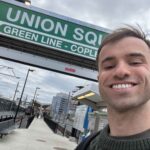
Justin Minion is a 3L at Harvard Law School. He holds a Bachelor of Arts in French from Cornell University. Justin is particularly interested in public works projects. Justin’s favorite methods of transportation are bike, train, and gondola lift (in roughly that order). He lives in Somerville, MA.
[1] Lynn refers to herself as “an extreme bicycle commuter.” https://www.youtube.com/watch?v=guRi8wBTjB8
[2] https://vimeo.com/68508954#t=965s
[3] Yglesias, Matthew. “Somerville, MA—Density Without Tall Building.” Slate. 2013. https://slate.com/business/2013/06/somerville-density-without-tall-buildings.html
[4] https://grassrootsfund.org/groups/friends-of-the-community-path
[5] Greater Somerville. Lynn Weissman & Alan Moore. https://www.youtube.com/watch?v=ko0g6iPTdlA
[6] Id.
[7] Michael A. Heller, James Salzman, Mine!: How the Hidden Rules of Ownership Control Our Lives (2021).
[8] Lewicki, Negotiation. P. 85.
[9] Id. P. 86.
[10] https://grassrootsfund.org/groups/friends-of-the-community-path
[11] https://www.youtube.com/watch?v=guRi8wBTjB8
[12] Id.
[13] Id.
[14] Twitter. Friends of the Community Path. https://twitter.com/pathfriends
[15] “Planning underway for new Gilman Square infrastructure and design.” The Somerville Times. 2021. https://www.thesomervilletimes.com/archives/113078
[16] Brown, Bert. “The Effects of Need to Maintain Face on Interpersonal Bargaining.” Journal of Experimental Social Psychology. 1968.
[17] I have been in contact with Lynn over Facebook though.
[18] Greater Somerville. 25:21. https://www.youtube.com/watch?v=ko0g6iPTdlA&t=1339s
[19] Associated Press. “Gov. Patrick signs transportation funding bill.” Apr. 2014. https://apnews.com/article/af1870278b6348509b26b38a0f2e4334
[20] WBUR. “Green Line Extensions Cost Rises to $2 billion”. Sep. 2014. https://www.wbur.org/news/2014/09/13/green-line-extension-cost-rises-to-2-billion
[21] The Somerville Times. “MBTA presents redesigned community path extension.” Apr. 2016. https://www.thesomervilletimes.com/archives/66788#:~:text=At%20the%20latest%20presentation%20about,out%20to%20be%20%24100%20million.
[22] The least cost-effective projects tend to be those that are moderately expensive, but never ridden because they’re built in cities where most commuters drive. Eric Goldwyn, Interview with Matthew Yglesias. https://www.slowboring.com/p/transit-costs-project-audio
[23] BRG Lookback Study. https://studylib.net/doc/13039031
[24] Goldwyn, Levy, Ensari. “The New York Case.” Transit Costs Project. p. 32. https://transitcosts.com/wp-content/uploads/NewYork_Case_Study.pdf
[25] Goldwyn, “The New York Case.” P. 33.
[26] “DART president says Dallas might not get most of $111 million promised by transit agency”. Dallas Morning News. 2023. https://www.dallasnews.com/news/politics/2023/03/01/dart-president-says-dallas-might-not-get-most-of-111-million-promised-by-transit-agency/
[27] The Definitive List of Bay Area Transit Agencies. https://www.seamlessbayarea.org/blog/transitagencieslist
[28] Another one of these projects that involves a maze of government stakeholders is the California High-Speed Rail. See “How California’s Bullet Train Went Off the Rails.” The New York Times. Oct. 2022. https://www.nytimes.com/2022/10/09/us/california-high-speed-rail-politics.html
[29] Eric Goldwyn, Interview with Matthew Yglesias. https://www.slowboring.com/p/transit-costs-project-audio.
[30] “What is the Project management Triangle?” MondayBlog. https://monday.com/blog/project-management/project-management-triangle/


